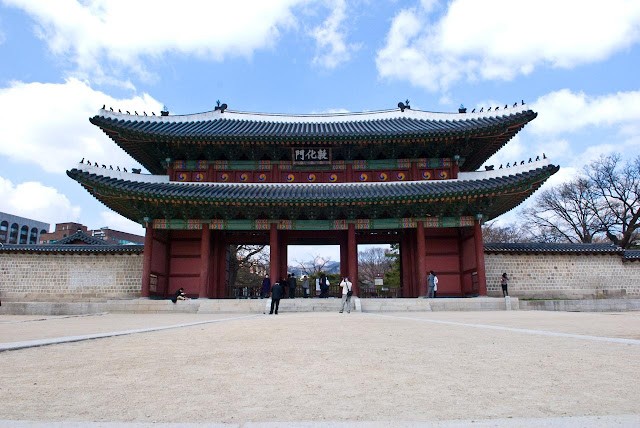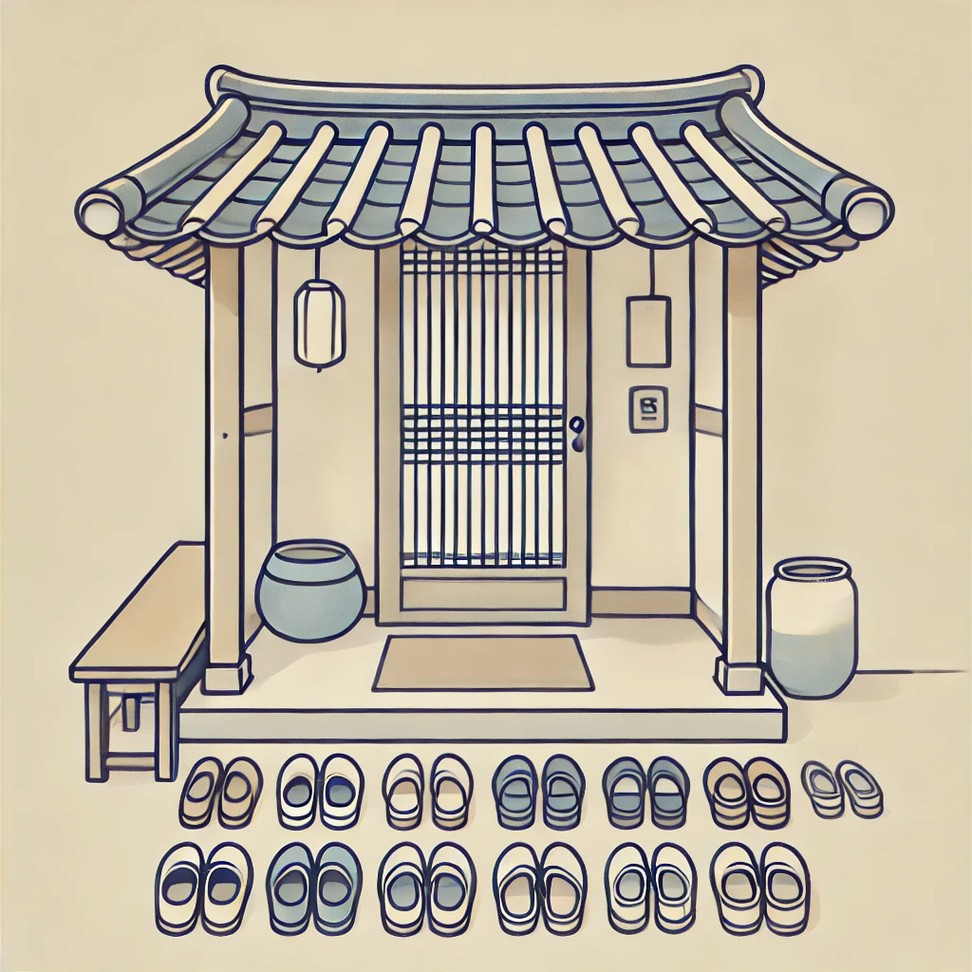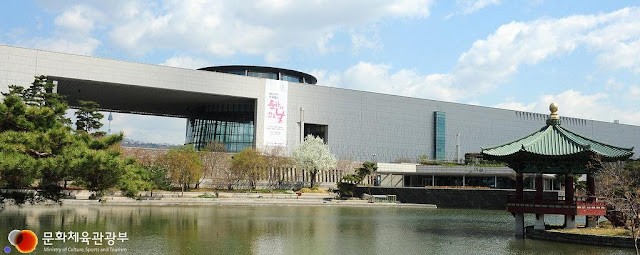Changdeokgung Donhwamun Gate, Seoul, Korea
[Photo Credit] Wikimedia Commons, Josh Hallett
TL;DR – Step into Korea’s royal secret.
Once reserved only for kings, Changdeokgung Huwon (Secret Garden) offers a peaceful, hidden escape in the heart of Seoul.
With lotus ponds, pavilions, and centuries-old pathways, it’s a living relic of Joseon royalty.
Strictly guided tours (limited to 100 people per session) protect its beauty—so plan ahead, reserve early, and don’t forget to enjoy tea in a nearby hanok afterward.
Changdeokgung Huwon, commonly known as Biwon (Secret Garden), is a hidden gem in the heart of Seoul that allows visitors to feel as if they have embarked on a journey through time. This hidden gem gained even more recognition when featured in the 2021 hit historical drama ‘The Red Sleeve,’ drawing attention to its mysterious beauty. This article will examine Changdeokgung Huwon, its historical significance, and how you can experience this enchanting place.
1. Introduction to Changdeokgung Huwon
Located in the heart of Seoul, Changdeokgung Huwon is one of the Joseon Dynasty’s most historically significant palace gardens. Initially, this garden was reserved exclusively for the king, queen, and royal family members, serving as a private retreat where nature and architecture harmoniously blend to create an artistic masterpiece.
※ The Joseon Dynasty (1392–1897) was a Korean dynastic kingdom that ruled for over 500 years, shaping Korea’s culture, governance, and traditions.
Huwon means “back garden,” and it is situated behind the main palace buildings. During the Joseon era, it functioned as a royal leisure space, a hunting ground, and an ornamental garden. Unlike other palace gardens, Huwon remains remarkably well-preserved in its original form, making it a beloved destination where visitors can witness its beauty through the changing seasons.
Recognizing its cultural and historical significance, Changdeokgung—including Huwon—was designated a UNESCO World Heritage Site in December 1997. Today, it is one of Korea’s most treasured landmarks, representing its rich history and architectural heritage.
Changdeokgung Huwon Opening Hours & Admission Fees
Planning to visit Changdeokgung Huwon? Be sure to check the schedule and ticketing details in advance! The admission hours and fees for Changdeokgung Palace and Huwon are different, so verifying them before your visit is essential.
Entry is available through 50% online reservations and 50% on-site ticket purchases, especially for Huwon. There is a strict limit of 100 visitors per session. Guests must join a guided tour at designated times.
🔗 Reserve Your Changdeokgung Huwon Ticket Here
The table below provides a detailed breakdown of Changdeokgung Palace and Huwon admission fees, categorized by age group.

🧭 If you are 25 years old, you need 8,000 won to visit the Huwon.
Changdeokgung Palace (Main Complex) Visiting Hours
– February – May, September – October: 09:00 – 18:00 (Last entry: 17:00)
– June – August: 09:00 – 18:30 (Last entry: 17:30)
– November – January: 09:00 – 17:30 (Last entry: 16:30)
Changdeokgung Huwon Visiting Hours & Guided Tours
The tour starts at the Huwon entrance, and it takes about 15 minutes on foot from the Changdeokgung entrance to the Huwon. Be sure to account for this walking time when planning your schedule.
🌍 Korean
– Tuesday to Thursday: 10:00, 11:00, 12:00, 13:00, 14:00, 15:00, 16:00 (March–October)
– Friday to Sunday: 10:00, 11:00, 14:00, 15:00, 16:00 (March–October)
🌍 English
– Tuesday to Sunday: 10:30, 11:30, 14:30, 15:30 (March–November only).
🌍 Chinese (汉语)
– Every Tuesday, Thursday, Saturday: 12:30.
🌍 Japanese (日本語)
– Every Wednesday, Friday, Sunday: 13:30.
Additional Notes:
– Entry Limits: Up to 100 participants per session (50 tickets reserved online + 50 on-site sales).
– Restrictions: Only foreign visitors are allowed during foreign language time slots (Korean visitors may join only when accompanying a foreign guest, up to 2 people).
– Duration: Approximately 70 minutes.
– Special Notes: Some areas, like the Okryucheon Heritage Zone, are under maintenance and closed until 2026 (April 13, 2023–2026).
2. Detailed Guide to Changdeokgung Huwon
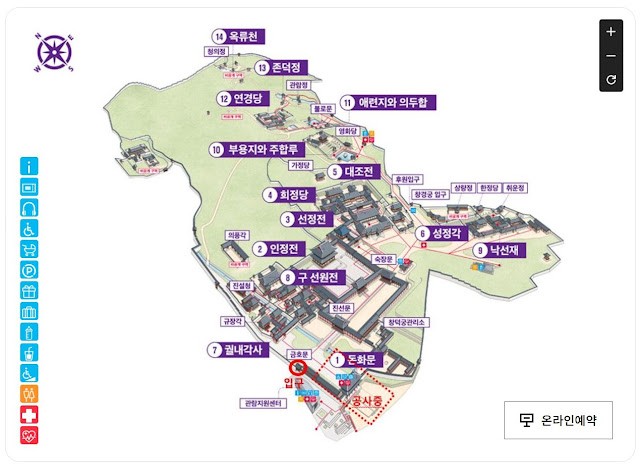

① Donhwamun Gate
② Injeongjeon Hall
③ Seonjeongjeon Hall
④ Huijeongdang Hall
⑤ Daejojeon Hall
⑥ Seongjeonggak Hall
⑦ Gwollaegaksa (The Offices Inside the Palace)
⑧ Former Seonwonjeon Shrine
⑨ Nakseonjae Complex
⑩ Buyongji Pond and Juhapru Pavilion
⑪ Aeryeonji Pond and Uiduhap Pavilion
⑫ Yeongyeongdang Residence
⑬ Jondeokjeong Pavilion
⑭ Ongnyucheon Stream
2-1.⑩ Buyongji Pond & Buyongjeong Pavilion
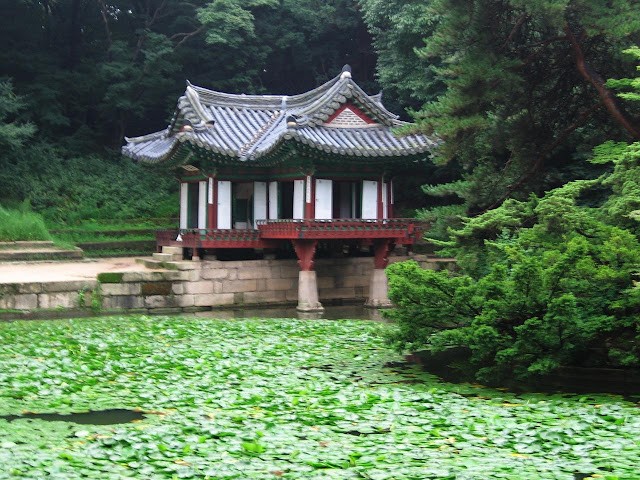
Buyongji is a rectangular pond, and to its south stands Buyongjeong Pavilion, which beautifully appears to float on the water—befitting its name, Buyong, which means lotus. The king used this location to discuss academic matters with his officials or to host grand banquets.
2-2.⑩ Juhapru & Gyujanggak
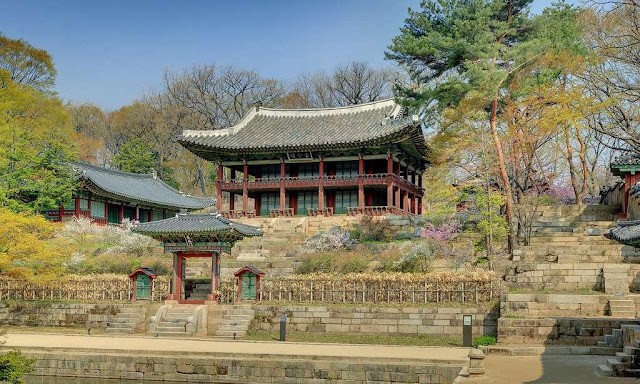
Juhapru is a two-story structure, with its first floor serving as Gyujanggak, the royal library. King Jeongjo established this space to promote scholarly learning and became a significant center of knowledge and culture.
2-3.⑫ Yeongyeongdang Residence
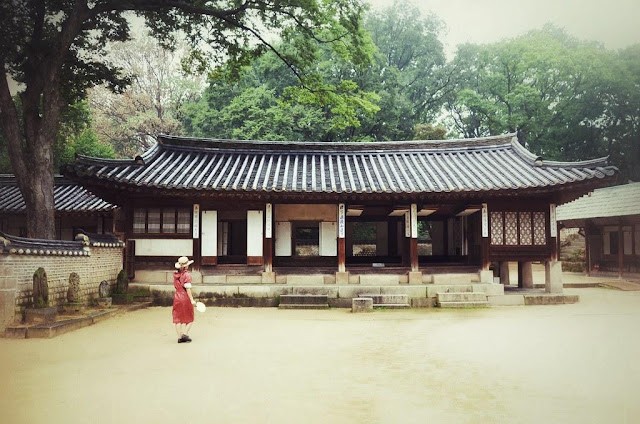
Yeongyeongdang is the largest traditional Korean-style building within Huwon. It is where the king and his officials held banquets and took respite.
2-4.⑬ Jondeokjeong Pavilion
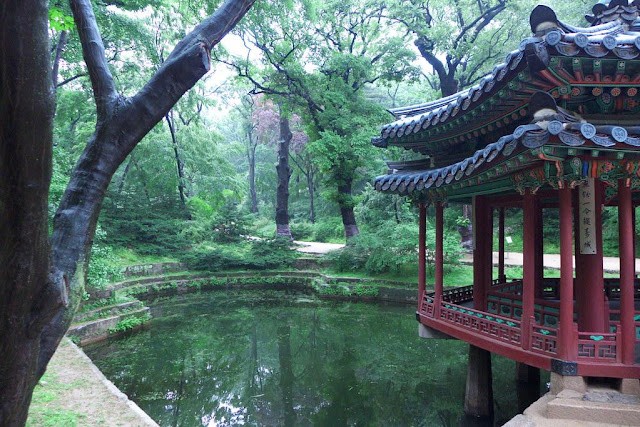
Jondeokjeong Pavilion, meaning “to elevate virtue”, was a tranquil retreat where the king could relax and deeply contemplate.
2-5.⑭ Changdeokgung Huwon Ongnyucheon (Jade Stream)
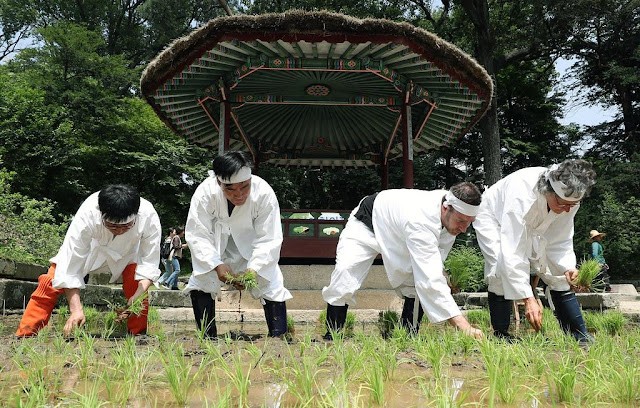
Deep within Huwon, Ongnyucheon is a picturesque valley where crystal-clear water flows through the serene landscape. It is one of the most scenic spots in the garden.
“Why not capture a photo in front of Buyongji, just like the protagonists in historical dramas?”
These sites are among the most iconic locations in Changdeokgung Huwon. When visiting, please take a moment to appreciate their historical significance, making your experience even more meaningful.
❓ FAQ (Frequently Asked Questions)
Q1. Can I visit Changdeokgung Huwon (Secret Garden) without a guided tour?
No. The Secret Garden is only accessible via guided tours at specific times. Free exploration is not allowed.
Q2. How do I book tickets in advance?
You need to register on the official ticket site (such as Ticketlink or K-Guide). Foreign credit cards are accepted. After booking, you’ll receive a QR code to show at the entrance.
Q3. Can Koreans join the foreign language tours?
Foreign language tours (English, Chinese, Japanese) are for foreigners only. However, a Korean visitor may accompany a foreigner (limit: 2 Koreans per foreigner).
Q4. How early should I book?
Reddit users recommend booking at least 5–7 days in advance, especially during peak seasons like spring and autumn.
Q5. How much does it cost to enter Huwon?
The Secret Garden tour costs approximately ₩5,000 for adults (ages 19+), ₩2,500 for youths. Entry to the main palace is separate.
Q6. How long is the guided tour?
The tour lasts about 70 to 90 minutes, depending on the route and group size. It involves moderate walking.
Q7. What’s the best season to visit?
Most visitors recommend autumn for stunning foliage and cooler weather, but summer mornings and spring blooms are also popular.
Q8. Is the Secret Garden worth it?
Absolutely. Travelers on Reddit and Quora describe it as the most beautiful royal garden in Seoul, with peaceful scenery and rich history.
3. How to Get to Changdeokgung Huwon
Changdeokgung Huwon is conveniently located about a 5-minute walk from Exit 3 of Anguk Station on Subway Line 3. Since parking spaces in the area are limited, it is highly recommended to use public transportation.
– By Subway
Ø Line 3: Walk about 5 minutes from Anguk Station (Exit 3).
Ø Lines 1, 3, and 5: Walk about 10 minutes from Jongno 3-ga Station (Exit 6).
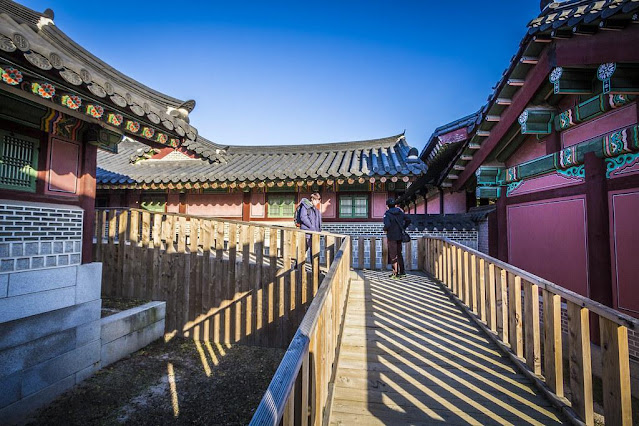
– By Bus
Multiple bus routes stop near Changdeokgung Huwon:
Ø Anguk Station Bus Stop: Walk for about 3 minutes.
Ø Changdeokgung Bus Stop: Walk for about 5 minutes.
4. Recommended Teahouses Near Changdeokgung Huwon
The area around Changdeokgung Huwon offers a variety of dining options. Traditional hanok teahouses are among them, providing the perfect setting to relax after your tour.
“Wrap up your visit to Changdeokgung Huwon by savoring a cup of tea in a serene hanok teahouse.”
Cha Ddeul (차마시는 뜰, 차뜰)
📍 26,Bukchon-ro 11na-gil, Jongno-gu, Seoul
Located in Bukchon Hanok Village, this traditional teahouse offers a tranquil atmosphere. Visitors can enjoy a variety of Korean teas paired with freshly steamed conventional rice cakes. A cup of tea accompanied by warm rice cakes provides a truly authentic and memorable experience.
Fritz Wonseo Branch (프릳츠 원서점)
📍 83,Yulgok-ro, Jongno-gu, Seoul
Situated next to Changdeokgung, this hanok café blends traditional Korean architecture with a modern aesthetic. The café is known for its freshly baked bread and high-quality coffee, and guests can enjoy a view of Changdeokgung from the outdoor seating area.
Hanok Teahouse (한옥찻집)
📍 12,Insadong 14-gil, Jongno-gu, Seoul
Located in Insadong, this cozy teahouse is set in a renovated hanok, providing a warm and peaceful ambiance. It serves carefully brewed traditional teas and a variety of conventional Korean desserts.
These teahouses near Changdeokgung offer an excellent opportunity to extend your cultural experience while unwinding in a historical atmosphere. Be sure to check their operating hours before visiting.
5. Places to Visit Near Changdeokgung Huwon
Several fascinating attractions are near Changdeokgung Huwon.
Changgyeonggung Palace, located next door, offers another glimpse into Korea’s royal heritage.
Just a short walk away, Insadong is a fantastic place to experience Korean culture and history. It is famous for its traditional crafts, souvenirs, and unique shops, which attract many tourists.
Additionally, Bukchon Hanok Village is another must-visit spot near Changdeokgung Huwon. Walking through its narrow alleys lined with traditional hanok houses, visitors can enjoy a beautiful blend of past and present, making it a truly memorable experience.
If you’re interested in staying in a traditional hanbok, check out the post below! It contains valuable information about hanok stays in Bukchon Hanok Village.
6. Visitor Guidelines
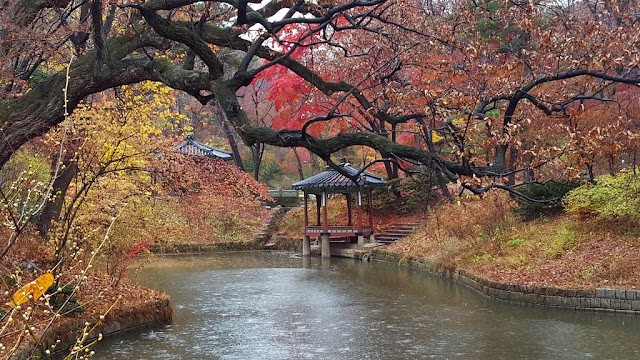
Changdeokgung Huwon limits the number of daily visitors to preserve this cultural treasure. Reservations are recommended to secure your ticket.
– No outside food or drinks are allowed inside.
– Smoking is strictly prohibited.
– Some areas within Huwon have steep pathways, so it’s best to wear comfortable walking shoes.
📌 “Every small effort helps protect our cultural heritage—please remember this during your visit!”
Final Thoughts
Why not step into history by visiting Changdeokgung Huwon, imagining scenes from historical dramas as you walk through its serene landscapes? Strolling along the same paths once walked by Joseon kings, you can embark on a timeless journey back to the royal past.
I hope this guide has helped you appreciate Changdeokgung Huwon’s charm. I’d love to hear about your experiences and impressions when you visit!
